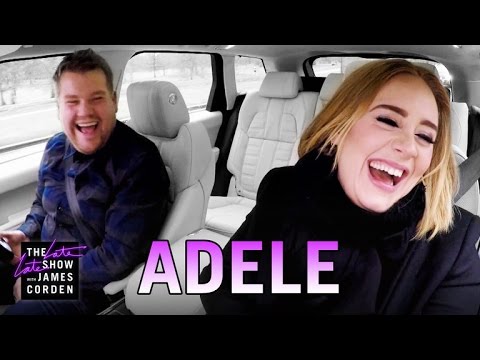7 powerful viral LinkedIn templates for your posts
Looking to build virality into your LinkedIn posts?
Here are 7 templates to draw inspiration from:
Viral LinkedIn Template #1 – Do extensive research and give the result to your audience
Offer your connections on LinkedIn access to a spreadsheet of tools, resources or insights that they can use to achieve various goals. They can be checklists, lists of suppliers, lists of digital platforms, statistics or anything else you can think of that is of value to your connections.
The success of this template lies in the number – the bigger the better.
Also, ask your connections to drop a comment if they want the list so you can send them a copy. This is a great organic way to build engagement on your post so the LinkedIn algorithm can give it a boost.
Examples:
100+ video editing software providers. Drop a comment and I will send you a copy!
200 free digital tools for project managers. Drop a comment below and I’ll send you a copy!
100 insights you can pull from Google Analytics. Tell me you want the list and I’ll send you a copy!

Viral LinkedIn Template #2 – Grab them, shake them, show them the light
This template requires a little reverse engineering and taking a different point of view of a situation all your followers can connect with.
Example:
Traditional leadership is failing. Quiet quitting is on the rise. And that’s a good thing. Let me tell you why.
Let’s analyse the example.
Grab your followers’ attention with a situation/challenge/problem that they are working to overcome or they can all relate to.
Introduce the result with the highest impact arising from this situation and flip it on its head.
Look at the consequence from a different standpoint and write what you see. Be insightful, mention statistics and include your solution organically.
Traditional leadership is failing. Quiet quitting is on the rise. And that’s a good thing. Let me tell you why. The C-suite is finally understanding that the needs of employees have changed. That they need to invest in upskilling the company’s managers. That they need to transform and update operations. That they need to change the decision-making process. Or get out-competed. And die.
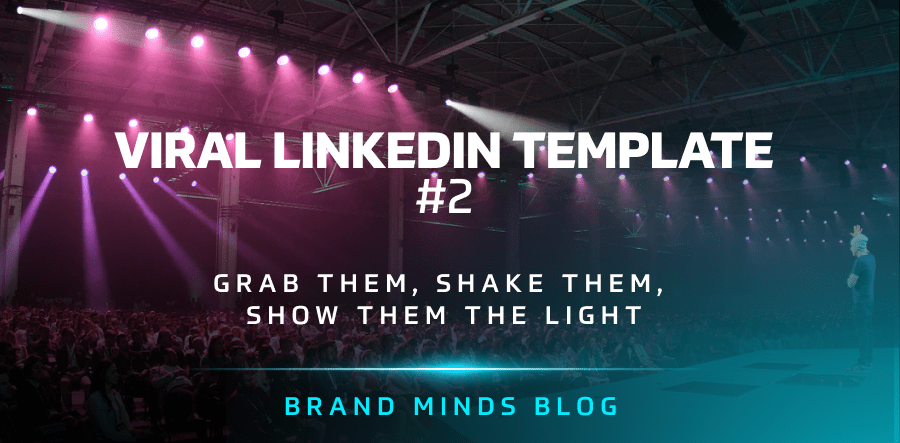
Viral LinkedIn Template #3 – Fill in the blanks
Invite your connections to share insights and knowledge on a specific topic.
Examples:
You know they are a wrong match for your team if they….
You know their investor pitch will fail because they ….
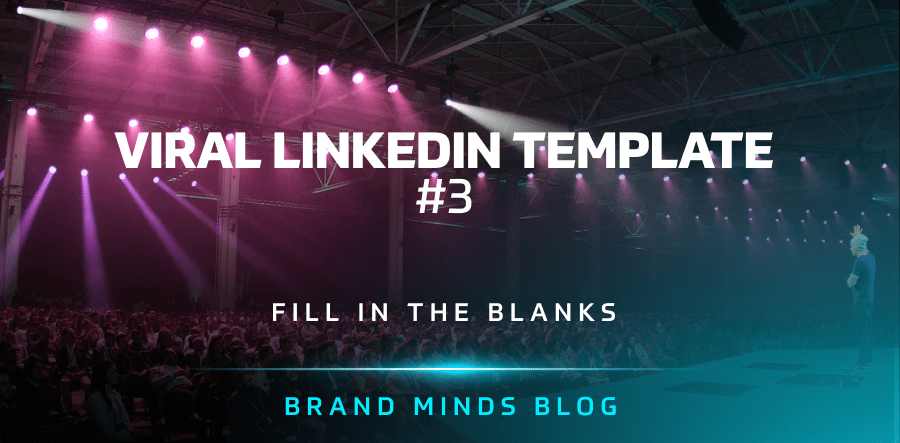
Viral LinkedIn Template #4 – The downside you didn’t know about
Make a list of all the ways a popular tool, platform or tactic fails to accomplish user’s goals, then offer your solution.
Examples:
Here are 20 ways Google Analytics fails to track campaign success.
Here are 10 reasons you should stop spending money on outbound marketing.
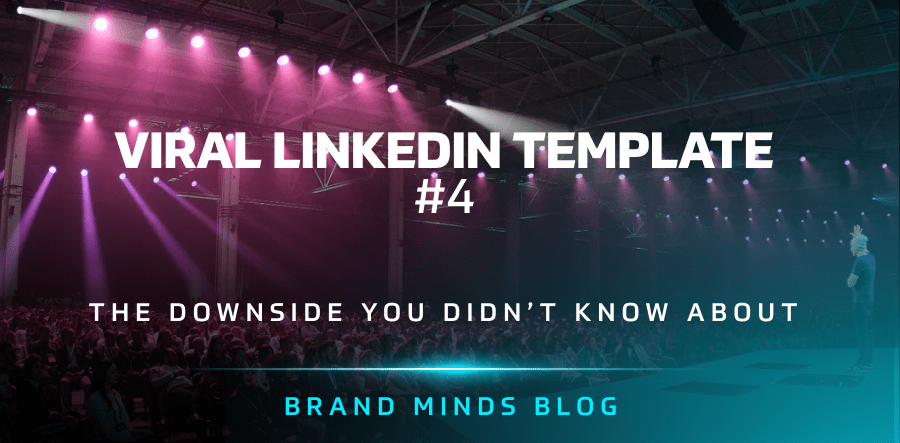
Viral LinkedIn Template #5 – I was shocked when he/she revealed the secret
Refer to a person of authority (subject matter expert, market leader, highly experienced professional) and list their most valuable insights.
Examples:
An investor with 30 years of experience told me the ingredients of a successful business. I was surprised when he revealed these secrets. Here is what he told me:
An HR director working for a billion-dollar business told me what I should do to build a successful company culture. I was amazed when she revealed this little-known strategy. Here is what she told me.
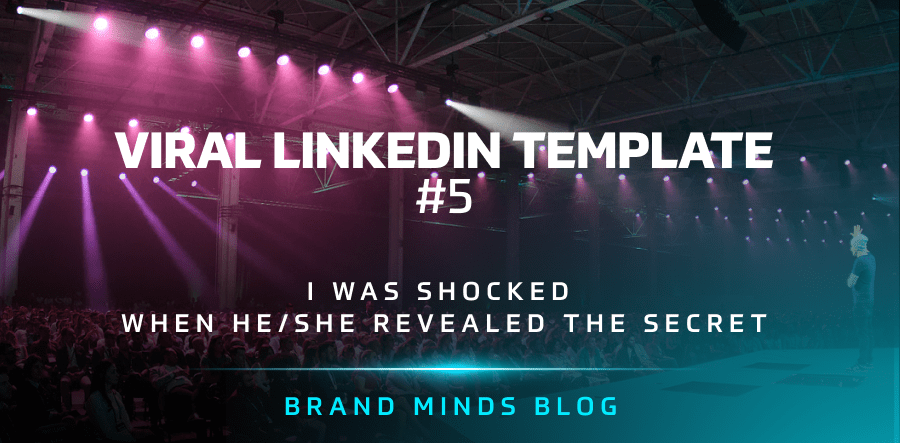
Viral LinkedIn Template #6 – Take your audience through a step-by-step process
This template is about teaching your connections how to complete a task or achieve an objective by applying a simple process.
Use adjectives to describe the process and grab attention: easy, simple, essential, effortless, unique, little-known, verified, endorsed, step-by-step, no-hassle, successful etc.
Mention what they achieve in the first sentence.
Examples:
Create the best Facebook campaign today. Here’s a verified 5-step process.
Write viral LinkedIn posts. Here’s a simple 3-step process.

Viral LinkedIn Template #7 – The ‘I can’t live without’ list
Recommend a number of tools essential in your job and frame them in such a way that conveys how valuable they are to you and your work.
Examples:
20 Chrome extensions I can’t live without.
5 daily apps I can’t do my job without.
6 positive affirmations I can’t start my day without.
10 sales habits I couldn’t be successful without.
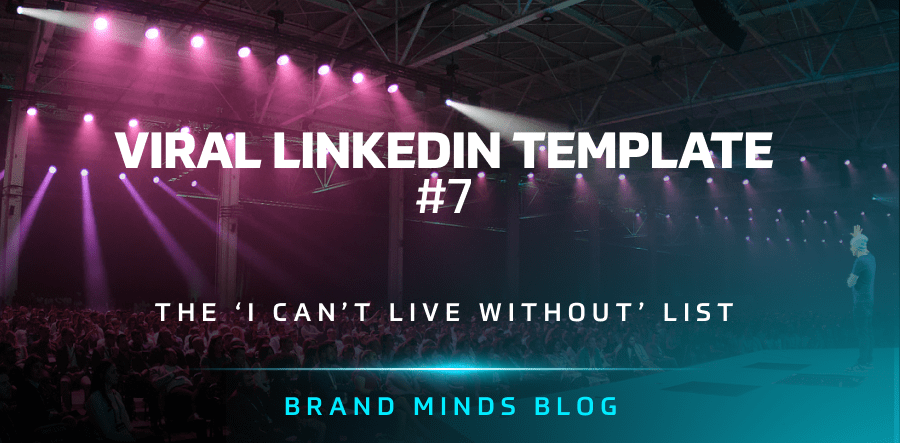
What makes a video viral?
Creating a successful viral campaign is every marketer’s dream nowadays and many agencies aspire to the idea of creating a video that will have a huge impact on the target and will get shared fast and, therefore, create a big buzz around it. But what is a viral video and how hard is to reach that goal? According to the definition on techopedia, a viral video is any clip of animation or film that is spread rapidly through online sharing. Viral videos can receive millions of views as they are shared on social media sites, reposted to blogs, sent in emails and so on. Most viral videos contain humor and fall into three broad categories:
- Unintentional Viral Videos: Videos that the creators never intended to go viral. These videos may have been posted by the creator or shared with friends, who then spread the content.
- Humorous Viral Videos: Videos that have been created specifically to entertain people. If a video is funny enough, it will spread.
- Promotional Viral videos: Videos that are designed to go viral with a marketing message to raise brand awareness. Promotional viral videos fall under viral marketing practices.
When it comes to the formula of creating a viral, it hasn’t been determined or shared yet, leaving us thinking that some of the success it has to do with luck and that most things actually go viral by accident. Very few people have mastered the art of creating viral content on purpose. What is for sure known is that it has to appeal to the target’s emotions, no matter their type (happiness, sadness, anger, joy, love, etc).
“Viral videos are the talk of the town—garnering coverage on popular blogs, rising to the top of sites like Reddit, being Tweeted and posted to Facebook, and even covered on the evening news,” wrote Megan O’Neill for AdWeek.
“There’s no specific number of shares, likes, retweets, reblogs, or whatever another measure of interaction needed to be reached in order for it to claim “viral” status. On YouTube, lots of videos get tens of thousands of views now shortly after being uploaded, but many people wouldn’t say that’s enough to consider it viral. Back in the day, however, when YouTube was much smaller and there weren’t as many users uploading videos, tens of thousands of views may have counted as <<going viral>>,” said Elise Moreau for Lifewire.
Moreover, advanced technology and platform design have made it way too easy to share things with our friends and followers, making the perfect environment for a ripple effect to occur on all levels of social media with the perfect piece of shareable content. All it takes is a few shares and the right audience to trigger an avalanche of sharing across the internet. It’s not easy to start a viral movement, but when it does happen, it can take the most regular people and turn them into internet celebrities practically overnight if it’s powerful enough.
According to Jonah Berger, marketing professor at the Wharton School at the University of Pennsylvania and author of “Contagious: Why Things Catch On”, quoted by entrepreneur.com, visceral response is what separates viral breakouts from busts. Berger has spent years investigating the mechanics behind virality, identifying six key drivers under the acronym STEPPS. They are Social Currency (e.g., sharing things that make people look good), Triggers (acknowledging that we talk about things that are top-of-mind), Emotion, Public (imitating what we see others do), Practical Value (news people can use) and Stories (information passed along under the guise of idle chitchat). “Each [driver] is a research-tested principle that increases the likelihood that people will talk about and share things, that brands get word-of-mouth, that services get shared and that videos get passed along the internet,” Berger explains. “We can reliably say that including certain characteristics and messages will increase the number of people who share [content] and the likelihood it will be shared.”
